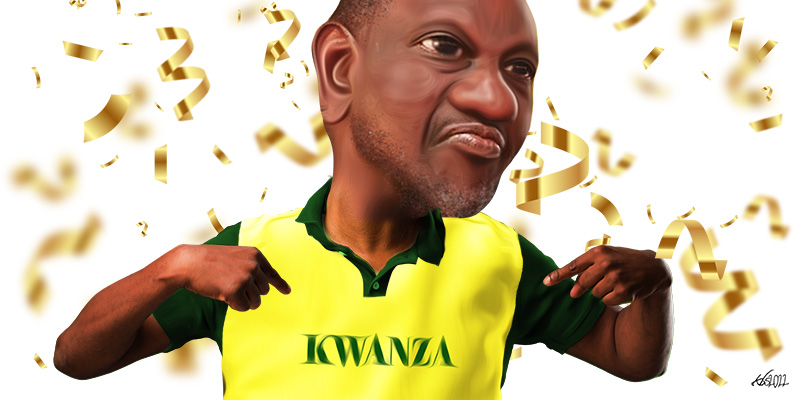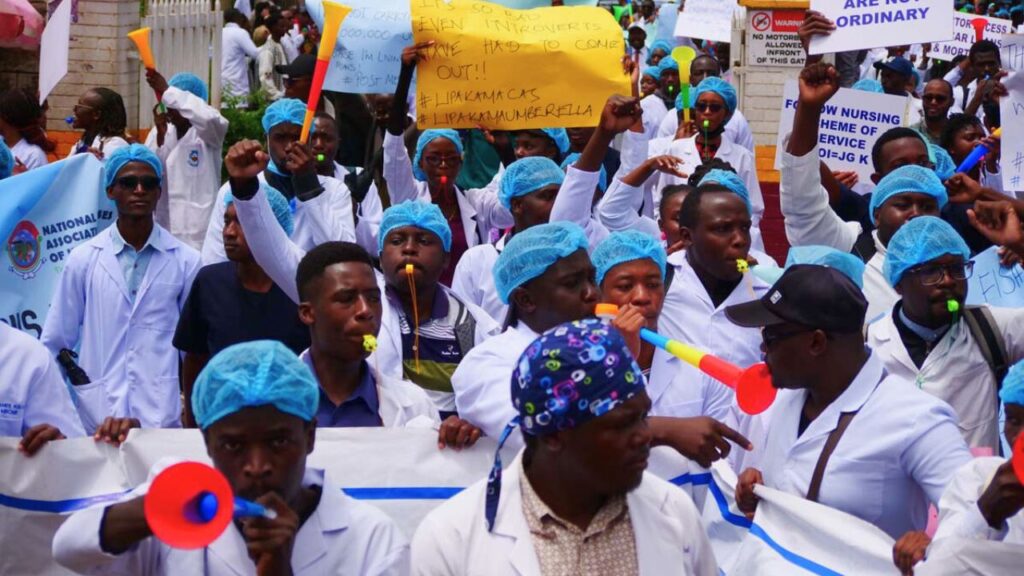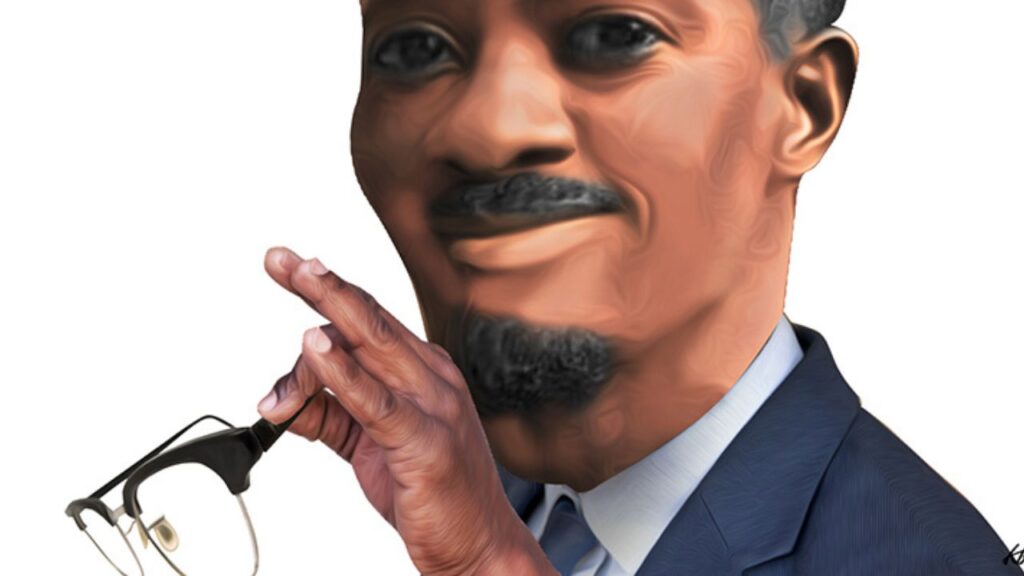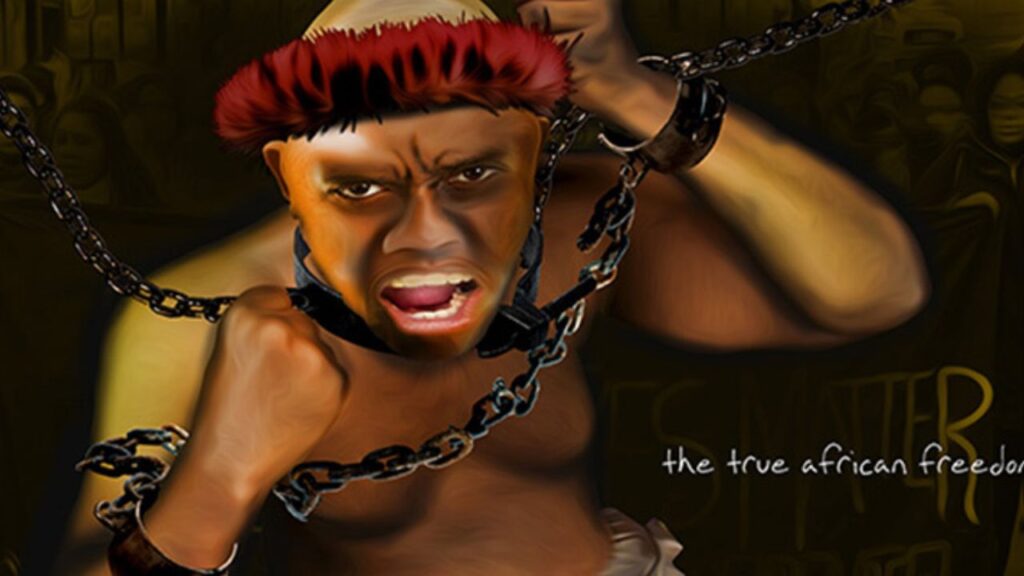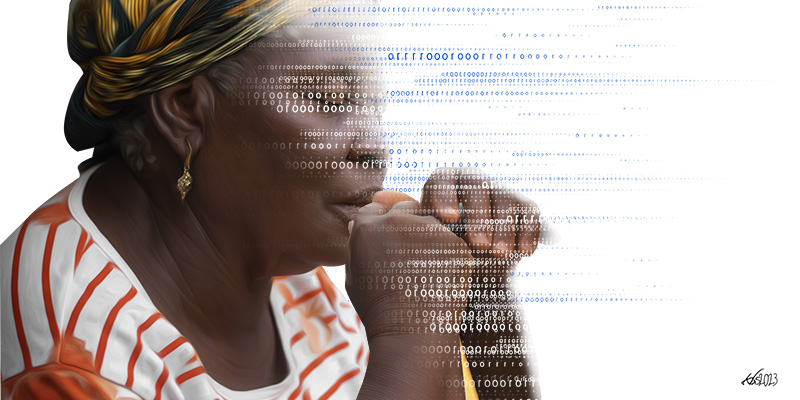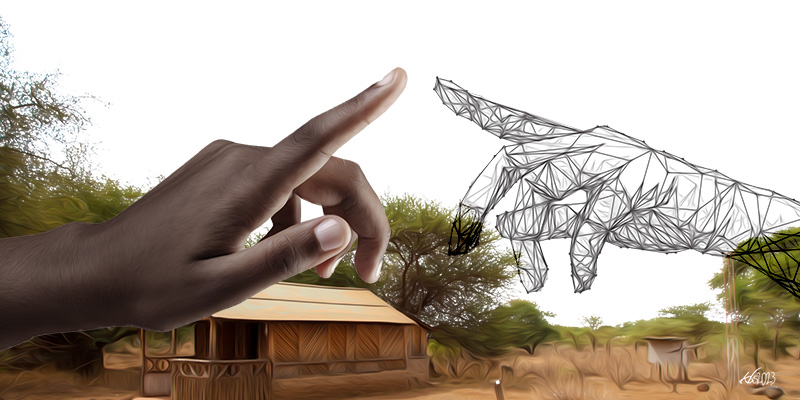More than three years ago, on 1 November 2018, I wrote an article on this forum titled Man in the Mirror: Echoes of Jomo in Uhuru. In that article I concluded that, just like Oginga Odinga helped facilitate Jomo Kenyatta’s ascendancy to the presidency but he himself never became president, William Ruto may have helped Uhuru Kenyatta win the presidency but he himself was unlikely to become president. Developments in the country in the countdown to the 9 August 2022 elections seem to buttress my argument of three years ago that kingmakers never become kings themselves, or, more precisely, they never succeed the kings they make. In my public lecture at Kenyatta University on 23 June 2022, entitled “The Uhuru-Ruto Administration and Electoral Politics in Kenya: A Dialectical Perspective”, I developed my argument further and buttressed my conclusions of three years ago using the three laws of dialectics.
The fallout between President Uhuru Kenyatta and Deputy President William Ruto is so complete that the incumbent president has thrown all his weight behind the de facto opposition leader instead of supporting his second-in-command to succeed him. This is a most rare development in the practice of democracy anywhere in the world. It, however, is not new to Uhuru. In the 2007 election, Uhuru was the official leader of the opposition. But instead of rallying the opposition forces against the incumbent, President Mwai Kibaki, Uhuru chose to cast his lot with Kibaki in a case wherein, perhaps, ethnic loyalty trumped democratic sensibilities. This time round, he is the incumbent casting his lot with the opposition and working hard to ensure his deputy does not succeed him. The six-million-dollar question is: why? Why did the UhuRuto duo fall out so badly given their brotherly closeness following their 2013 electoral victory?
If you ask Deputy President Ruto and those close to him, the issue lies in the Hustler vs. Dynasty saga. The argument is that those who belong to the dynasty – Uhuru Kenyatta, Raila Odinga, and Gideon Moi – have regrouped to ensure a Hustler – William Ruto – does not ascend to the highest seat in the land. This narrative has garnered quite some movement in the country, but it does not actually explain the fallout between the president and his deputy, nor the fact that the deputy president is unlikely to succeed the president. The explanation lies squarely at the feet of the deputy president – his hubris, raw ambition, lack of humility, and generally taking his succession to the presidency for granted.
Whereas the 2010 constitution secured the office of the deputy president from the arbitrariness of serving at the pleasure of the president, still the occupant of that office needs to demonstrate some level of humility and deference to the president. Indeed, the current institutional arrangement in Kenya is modelled on the American system. Yet even in the latter system, vice presidents tend to demonstrate utmost loyalty and deference to the president and are always keen never to be seen to upstage the president or hog the limelight. Hubert Humphrey, the vice president to Lyndon Johnson noted, “You are his choice in a political marriage, and he expects your absolute loyalty.” Nelson Rockefeller, vice president to Gerald Ford said of his duties: “I go to funerals, I go to earthquakes.” John Adams, the first vice president of the United States, said, “I am vice president. In this I am nothing, but I may be everything.” Indeed, he became “everything” when he was elected the second president of the Unites States in 1796. Similarly, Woodrow Wilson’s vice president, Thomas Marshall said, “Being vice president is comparable to a man in a cataleptic fit; he cannot speak; he cannot move; he suffers no pain; he is perfectly conscious of all that goes on but has no part in it.” Mike Pence, vice president to Donald Trump quipped: “You shut the door; you tell the boss exactly what you think. But when the door opens, the job of the vice president is to stand right next to the president and implement the policy that he’s decided.”
This level of loyalty and humility has completely been missing on the part of Deputy President Ruto. Indeed, Ruto failed to learn from Moi, who loyally served as Jomo Kenyatta’s vice president for a decade and endured many humiliating moments but eventually acceded to the presidency after the death of Jomo Kenyatta in 1978. Instead, Ruto has demonstrated raw ambition, acted as if he was co-president with Uhuru, and began campaigning as soon as the 2017 elections were over. At public events with the president, Ruto has tended to hog the limelight, enunciating government plans and policies even before calling upon the president to speak, a practice oddly inconsistent with all other vice presidents in the country and elsewhere in the democratic world.
A dialectical perspective
In my public lecture at Kenyatta University on 23 June 2022, I sought to demonstrate why Ruto is unlikely to succeed Uhuru in 2022 using the three laws of dialectics. These laws include the law of the unity and conflict of opposites; the law of the passage of quantitative changes into qualitative change; and the law of the negation of the negation. In the following sections, I discuss each law and how it applies to Kenya’s electoral politics, with particular focus on the August 2022 presidential election outcome.
The law of the unity and conflict of opposites
According to Vladimir Lenin and Friedrich Engels, the law of contradiction (the unity and conflict of opposites) in phenomena is the basic law of materialist dialectics. Our world is a paradoxical terrain characterized by a unity of contradictions, a unity of opposites. We have birth vs. death; above vs. below; wealth vs. poverty; capital vs. labour; sale vs. purchase; boom vs. bust; Light vs. darkness; rulers vs. ruled, etc. These contradictions are universal in all intellectual disciplines. In mathematics, there is the integral and the differential (plus and minus). In mechanics, there is action and reaction. In physics, there is positive and negative electricity (by which we can boil water and freeze it). In chemistry, there is fusion and fission of atoms (combination and dissociation). In social science, there are the haves and the have-nots (the foundation of class struggle and the basis of the apparent popularity of the “hustler-dynasty” narrative in the current electoral politics in Kenya). In war, there is defence and offense, advance and retreat, victory and defeat. Even the human individual is made up of opposites, the spirit and the flesh which, the Bible notes in Galatians 5: 17, are always at odds with one another – “For the desires of the flesh are against the spirit, and the desires of the spirit are against the flesh, for these are opposed to each other, to keep you from doing the things you want to do.”
Ruto has tended to hog the limelight, enunciating government plans and policies even before calling upon the president to speak.
The essence of the dialectics is that gradual changes in either of the contradictory forces create crises within phenomena. These crises reach turning points in which one force quantitatively grows in strength and overcomes its opposing force, resulting in qualitative change. How does this law apply to the Uhuru-Ruto saga in light of the political history of Kenya?
First, prior to rising to power, Jomo and five others were imprisoned by the colonialists, allegedly for masterminding the Mau Mau rebellion. These are now popularly known as “The Kapenguria Six”. Similarly, prior to assuming the presidency, Uhuru and five others were indicted by the ICC, allegedly for masterminding and financing post-election violence. They have since come to be known as “The Ocampo Six”.
Second, Jomo and Jaramogi found common ground in the fight for independence, Jaramogi arguing the case for “uhuru na Kenyatta” and refusing to form government while Jomo was till imprisoned. Yet the two fell out over ideology and policy differences soon after independence. On the other hand, Uhuru and Ruto started off on opposite sides of the 2008 post-election violence, but found common cause once indicted by the ICC and partnered to save themselves by acquiring political power. Yet the two have now fallen out and become sworn enemies.
Third, whereas Jomo and Jaramogi were icons of the anticolonial nationalist struggle, Uhuru and Ruto are protégés of former President Moi, created, perhaps, in the image of the latter, Ruto particularly more so than Uhuru. Ruto is a natural politician who has perfected the ruthlessness of his political mentor. Uhuru, on the other hand, is a reluctant politician who seems more at ease in private social life than in the hustle and bustle of the political world. In essence, the initial UhuRuto bromance that propelled the duo to power and the final fallout that spells doom for Ruto’s presidential ambition is an exemplification of the law of the unity and conflict of opposites that is constantly at play both in the physical and social worlds.
The law of the transformation of quantitative change to qualitative change
According to Engels (1973) and Trotsky (1994), for us to fully understand the essence of change, both social and physical, we have to grasp the law of the transformation of quantitative change to qualitative change. Change, development, or evolution is not unidirectional, unilinear, and nor does it occur gradually in a straight, smooth line. There are long periods of time when nothing seems to be taking place with regard to change, development, or evolution. Then, out of the blue, something seemingly miraculous happens: a major social revolution, a physical catastrophe, a breakthrough in scientific discovery, an innovative discovery. The point here is that at moments when nothing seems to be happening, there are small quantitative changes taking place that eventually add up to a major qualitative change that we then view as a major leap forward.
According to Trotsky, this law of the transformation of quantitative change into qualitative change, from quantity to quality, has an extremely wide range of applications, from the smallest particles of matter at the subatomic level in chemistry to the largest physical and social phenomena known to humans. Note the quantitative changes that lead to baldness: Does loss of one hair lead to baldness? No. How about loss of two, three, four hairs? The answer remains no. But constant loss of one hair at a time (quantitative change) leads to baldness (a qualitative change).
The notion that under certain conditions even small things can cause big changes finds expression in all kinds of sayings and proverbs: “The straw that broke the camel’s back”, “Many hands make light work”, and “Constant dripping wears away the stone”.
How does this law of the passage of quantitative changes to qualitative change apply to the case of Kenya? This law’s implication is that, at the social level, change, development, or progress is not unidirectional and unilinear, nor does it occur gradually in a smooth straight line. Sometimes one step forward is followed by two steps backwards and vice versa. Note the convoluted and messy decades-long process of democratization in Kenya: the concerted struggles that led to the repeal of Section 2(A) of the constitution to return the country to multiparty politics in 1992; the “No Reforms, No Elections” movement in the run-up to the 1997 elections that led to the Inter-Parliamentary Parties Group compromise on expanding representation to the electoral commission; opposition unity and victory in 2002 followed by constitutional reform acrobatics; the 2008 post-election violence and the momentum towards a new constitutional order in 2010 that created a devolved system of governance and established the Supreme Court of Kenya, among many other democratic achievements.
At moments when nothing seems to be happening, there are small quantitative changes taking place that eventually add up to a major qualitative change that we then view as a major leap forward.
Even when nothing seems to be happening, small quantitative changes are usually taking place that eventually add up to a major qualitative change. Note here the seismic ruling of the Supreme Court of Kenya that nullified the August 2017 presidential election. This was preceded by periodic changes in the personnel of the Supreme Court: the retirement of Chief Justice Willy Mutunga brought in Chief Justice David Maraga; the dismissal of Deputy Chief Justice Nancy Barasa brought in Kalpana Rawal whose retirement brought in Philomena Mwilu; the retirement of Phillip Tunoi brought in Isaac Lenaola.
Without these little quantitative changes (not to mention the protracted changes that led to the new constitution that provided for a Supreme Court), it is impossible to expect that the celebrated landmark ruling nullifying the presidential election, the first in Africa, would have come to pass. Remarkably, the Supreme Court has emerged as the most important countervailing power to the executive and the anchor for rule of law and democratic governance in the country. The role of the legislature in this regard remains dismal, the democratic gains of the country notwithstanding.
The law of the negation of the negation
According to Engels (1973), Hegel (1991), and Marx (2002), the law of the negation of the negation explains the repetition at a higher level of certain features and properties of the lower level and the apparent return of past features. In the development of social and physical phenomena, there is a constant struggle between form and content and between content and form, resulting in the eventual shattering of the old form and the transformation of the content. This whole process, according to the three dialecticians, can best be pictured as a spiral, where the movement comes back to the position it started, but at a higher level. For instance, when a grain of maize is planted, it germinates into a plant. The original maize grain is negated. The plant grows, flowers, and produces even more and better grains, which are harvested and processed in the making of flour; the negation is thereby also negated!
At the social level, historical progress is achieved through a similar series of contradictions. Where the previous stage is negated, this does not represent its total elimination. The new stage does not completely wipe out the stage that it supplants.
The UhuRuto fall out represents an interesting case of the negation of the negation, dialectically speaking. First, the two are protégés of President Daniel arap Moi – Ruto a natural politician, Uhuru a reluctant one. Note here Uhuru’s apparent “absence” during his first term compared to Ruto’s robust presence, scheming, and political strategizing. Indeed, as demonstrated by the audio now doing the rounds on social media, and confirmed by Deputy President Ruto himself in a KTN interview on 7 July 2022, President Uhuru Kenyatta was willing to leave office and retire to his Ichaweri village after the nullification of the August 2017 elections, but Ruto wouldn’t countenance it, going so far as to think of slapping the president for suggesting that they quit the presidency!
Remarkably, the Supreme Court has emerged as the most important countervailing power to the executive and the anchor for rule of law and democratic governance in the country.
Second, Uhuru and Ruto were on the same side of the political divide in the 2002 elections. Uhuru ran for president while Ruto supported him to succeed Moi. They, however, soon fell out and, in the post-election violence of 2008, Uhuru and Ruto were on opposite sides of the divide. Third, when the two were indicted by the ICC, they found common ground and became bosom friends. They successfully campaigned to acquire power to save their skins. However, the two fell out immediately after their second-term inauguration in 2017. By March 2018, Uhuru was with his “enemy” Raila and not with his “bosom friend” Deputy President Ruto.
In so doing, Uhuru emerges as a very strange political animal, perhaps an exemplification of the law of the negation of the negation. As pointed out above, as Official Leader of the Opposition in 2007, he cast his lot with the incumbent President Kibaki instead of teaming up with fellow oppositionists to run for the presidency. Apparently, the force of ethnic ties trumped political principle. Now, as the incumbent president in 2022, he has cast his lot with the opposition instead of mobilizing his ruling party to retain power under his deputy, as political norms would dictate.
What are the implications of the Uhuru-Ruto saga for the 2022 electoral politics and for democratization in Kenya more generally?
Three implications
Three implications can be drawn from the Uhuru—Ruto saga from a dialectical perspective. First, every individual is a bundle of contradictions imbued with positive and negative forces, forces of both good and evil. It is what force is in ascendancy within us that determines whether we are called good or bad. Hence, no one political actor is inherently bad or inherently good. Ruto may have been stringently against the enactment of the 2010 constitution, yet he stood against the BBI that sought to amend the constitution even before its full implementation. This is a plus for constitutionalism in the country. Similarly, Uhuru may have won an illegitimate second term in October 2017 and promised to “revisit” the judiciary that nullified his August 2017 “victory”, yet his current support for Raila may open up the presidency to another Kenyan community beyond the Kikuyu and Kalenjin who have occupied the presidency since independence. This is a plus in the overall democratization of the country.
The second implication is related to the popular saying that there are no permanent friends or enemies in politics, only permanent interests. Political enemies can easily become political friends and vice versa, another exemplification of the law of the unity and conflict of opposites. Uhuru and Ruto were on opposite sides of the bitter post-election election violence of 2008. They soon became bosom friends after their indictment and partnered to win power in a close relationship described by the media as a “bromance”. They have since fallen out so bitterly that they no longer shake hands that they once clasped in a show of tuko pamoja, we are together. Similarly, in 2002 Raila became a Njamba in Mount Kenya for his Kibaki Tosha declaration in the elections of that year. By 2005, to Mount Kenya, Raila had become “a hyena from the West” because of his opposition to the 2005 constitutional referendum. Raila is now “climbing the mountain” with the firm support of Uhuru and Martha.
The two are protégés of President Daniel arap Moi – Ruto a natural politician, Uhuru a reluctant one.
The third and final implication of the Uhuru-Ruto fallout is that kingmakers never succeed the kings they create. The Kenyan political scene is replete with evidence of this reality. Jaramogi may have contributed to making Jomo president, by refusing to form a government while Kenyatta was still in prison when KANU won the internal self-government elections of 1961. Jaramogi insisted on demanding for “uhuru na Kenyatta”. Although he became vice president to Jomo, Jaramogi never succeeded Jomo. Barely two years after independence, they fell out with each other over matters of policy and ideology and Jaramogi was marginalized from power never to recover. Similarly, Charles Njonjo contributed to making Moi president back in 1978, but he was himself soon hounded out of politics ignominiously. Even Raila contributed to making Mwai Kibaki president, but they soon fell out and became bitter enemies. Raila did not succeed Kibaki.
Deputy President William Ruto repeatedly says he made Raila Prime Minister and, more particularly, that he made Uhuru president. Will he succeed President Uhuru Kenyatta in the 9 August 2022 elections? As the foregoing exposition illustrates, historical precedent and dialectical odds are stacked against Ruto. Raila is favoured to succeed the son of Jomo. In any event, the choice between the Azimio and Kenya Kwanza presidential tickets could not be more stark, even dialectically speaking. Even as the Azimio duo of Raila and Martha were on the forefront of the second liberation that yielded multipartyism in 1992, the Kenya Kwanza duo of Ruto and Gachagua were deeply ensconced in the bosom of the authoritarian Moi regime – Ruto as a prominent member of the Youth for KANU ’92 and Gachagua as the system’s favourite District Officer in Molo chasing around and harassing pro-democracy advocates.
Uhuru emerges as a very strange political animal, perhaps an exemplification of the law of the negation of the negation.
In the final analysis, the Uhuru-Ruto fall out perfectly captures the dialectical law of the negation of the negation in matters of social development. With it, the country seems to have spiralled back to the fallout between Jomo and Jaramogi. However, given the democratization process in the country, we are at a higher level of social and political development. Indeed, had it not been for the new constitution – born of this process – Deputy President William Ruto would long have been sacked and rendered into political oblivion. He is the greatest political beneficiary of the 2010 constitution even though he was its chief opponent. Nevertheless, just like Jaramogi before him, it is highly unlikely that Ruto will succeed Uhuru come 9 August 2022, the new political dispensation notwithstanding.
Does this mean William Ruto is absolutely destined to lose the August 2022 elections? Historical precedent and the dialectical odds dictate so. However, as Thomas Kuhn demonstrates in his Structure of Scientific Revolutions (1962), there are moments of anomalies where the established paradigm is shuttered leading to a methodological and theoretical rethinking within the scientific community. In other words, a Ruto win in August 2022 is possible, but it would be such an extraordinary accomplishment given historical precedent and dialectical dictates, that it would lead us to rethink and re-theorise our political realities and possibilities.

